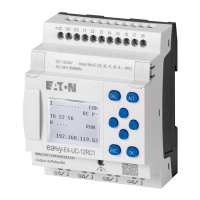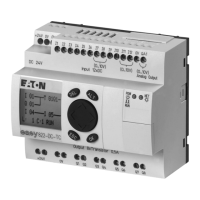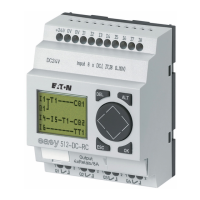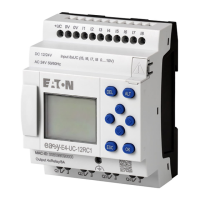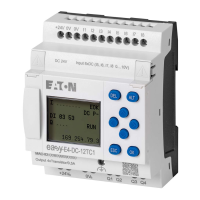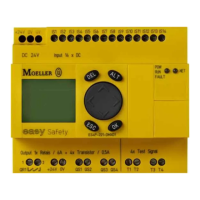6 Internal
6.2 Delay times for inputs and outputs
Operating instructions 05/10 MN05013003Z-EN www.eaton.com 189
6.2 Delay times for inputs and outputs
The time from reading the inputs and outputs to switching contacts in the
circuit diagram can be set in easy via the delay time.
This function is useful, for example, in order to ensure a clean switching
signal despite contact bounce.
Figure 91: easy input assigned with a switch
easy-DC, easy-DA, easy-AB and easy-AC units function with different input
voltages and therefore also have different evaluation characteristics and
delay times.
6.2.1 Delay times with -DA and -DC basic units
The delay time for DC signals is 20 ms.
Figure 92: Delay times of easy-DC and easy-DA basic units
An input signal S1 must therefore be 15 V or 8 V (easy-DA) for at least 20 ms
on the input terminal before the switch contact will change from "0" to "1"
(range A). If applicable, this time must also include the cycle time (range B)
since easy does not detect the signal until the start of a cycle.
The same time delay (range C) applies when the signal drops out from 1 to 0.
If the debounce is switched off, easy responds to an input signal after just
0.25 ms.
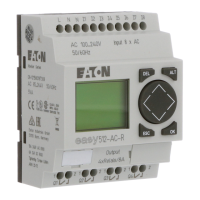
